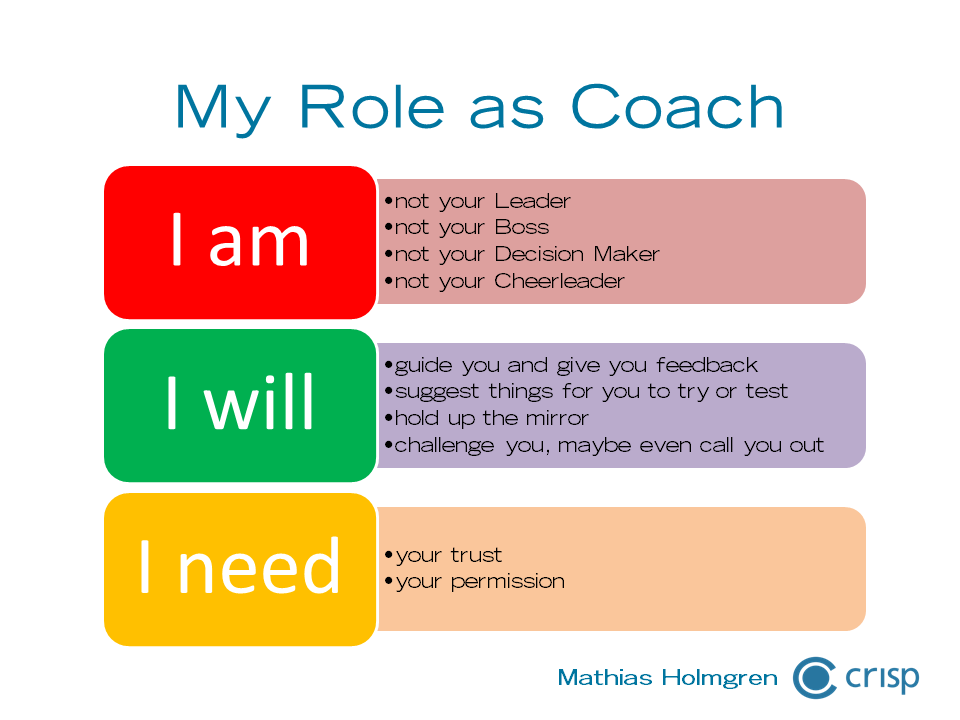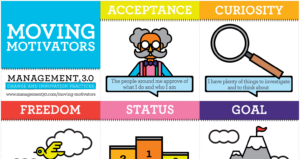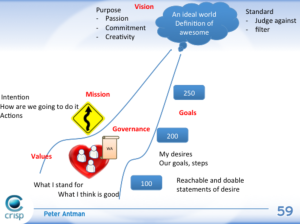The role or function of an agile coach can be be a bit of a challenge to wrap your head around if it is new to you. Depending on your situation and on agreements with people in your organization, an agile coach could work with a wide range of responsibilities. It could be working closely
Continue readingTeam coaching in practice
 Have you worked with teams that don’t communicate well? Or teams that don’t collaborate? What about teams that deliver late or with poor quality? Or maybe teams that are in constant negative conflict?
Have you worked with teams that don’t communicate well? Or teams that don’t collaborate? What about teams that deliver late or with poor quality? Or maybe teams that are in constant negative conflict?
How do you tackle these issues? It might feel like you can fix everything by changing some of the people on the team. Before you do that, consider how you’ve set the stage for your team. Will removing and adding some people really solve all your problems? Or will the new members find themselves in the middle of a dysfunctional team, and end up unhappy and not delivering to their full potential?
Here are some of the things you can think about when you work with teams to create an environment where they can succeed.
Constellation retrospective
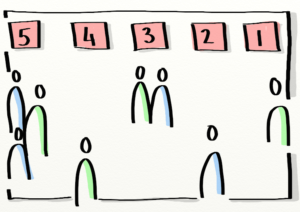 This is a strong retrospective for bringing issues up to the surface. Instead of just one person expressing an issue as a positive or a negative, the whole team feedbacks about the importance of the issue. The team then decides which issues to tackle. The retrospective also exposes issues where there is not common view, and highlights areas of alignment. It also allows the team to ask tough questions in a safe environment.Continue reading
This is a strong retrospective for bringing issues up to the surface. Instead of just one person expressing an issue as a positive or a negative, the whole team feedbacks about the importance of the issue. The team then decides which issues to tackle. The retrospective also exposes issues where there is not common view, and highlights areas of alignment. It also allows the team to ask tough questions in a safe environment.Continue reading
What makes your team tick
You have a team member who has a pressing issue. It’s the single most important thing that they need to resolve. They explain the problem to a coworker, suggest a solution and ask for support… and all they get is a tepid response. This is a situation that repeats itself across workplaces every day. There are many reasons why people refrain from helping. They might not have the competence, they might disagree with the solution/problem or maybe they just don’t have the time. But what happens when they have the competence, agree with the assessment and could easily make time, but choose not to? Why don’t they? How do you help your team navigate these situations?
How to set role expectations and working agreements
 Conflicts in teams about how to work are common. There are expectations from team members on each other that aren’t being met. In a given team, members might be implicitly expected to perform a certain task. The team might have unspoken policies that seem to be common sense. Sometimes people pick up on these unspoken rules and implicit expectations, but when they don’t, you have a team in conflict. You can’t avoid all conflict (and a dose of healthy debate and discussion is good for teams), but you can help teams by explicitly defining the roles and working agreements. Instead of dealing with conflict after the fact, you start with discussion and agreement. The following workshop is the one I use with my teams and organizations.
Conflicts in teams about how to work are common. There are expectations from team members on each other that aren’t being met. In a given team, members might be implicitly expected to perform a certain task. The team might have unspoken policies that seem to be common sense. Sometimes people pick up on these unspoken rules and implicit expectations, but when they don’t, you have a team in conflict. You can’t avoid all conflict (and a dose of healthy debate and discussion is good for teams), but you can help teams by explicitly defining the roles and working agreements. Instead of dealing with conflict after the fact, you start with discussion and agreement. The following workshop is the one I use with my teams and organizations.
The Pirate Ship – Growing a great crew: a workshop facilitation guide
The Pirate Ship is a workshop format that will help you grow amazing teams. It is “speed boat” on steroids. I have now been using it for a couple of years, and the time have come to share this useful and productive format.
I do a lot of workshops with teams. Very often the workshops are about the teams themselves. It can be anything from getting a newly started team up and running to helping a mature and stable team find new inspiration and challenges.
Crisp consensus model 2.1
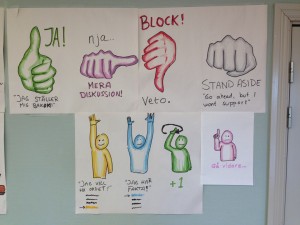
At Crisp we try to use consensus when making important decisions. Why do we do that?
Crisp is a very flat company. Most of us have no boss and report to no one. Basically you can be part of Crisp in two ways: either you have your own firm and have a partner contract with Crisp (all consultants have this) or you are employed by Crisp (administrative personnel). Crisp is owned by most (but not all) of the members/partners. The owners have, however, renounced their right to run the company (from all but legal necessities). This means that the company is run by all partners and employees with an equal vote each. We no longer have a CEO and we elect our board. This means we have to have good ways of making decisions together. And consensus is a very good way of making decision in a flat group like ours.
Scrum in the large – demystify roadmaps and progress tracking
As a Scrum team, we need to recognise that we are not alone in building business value for our software and provide visibility in where we are heading. By using a roadmap updated per sprint basis is an easy way of making everyone pull in the same direction.
Continue reading